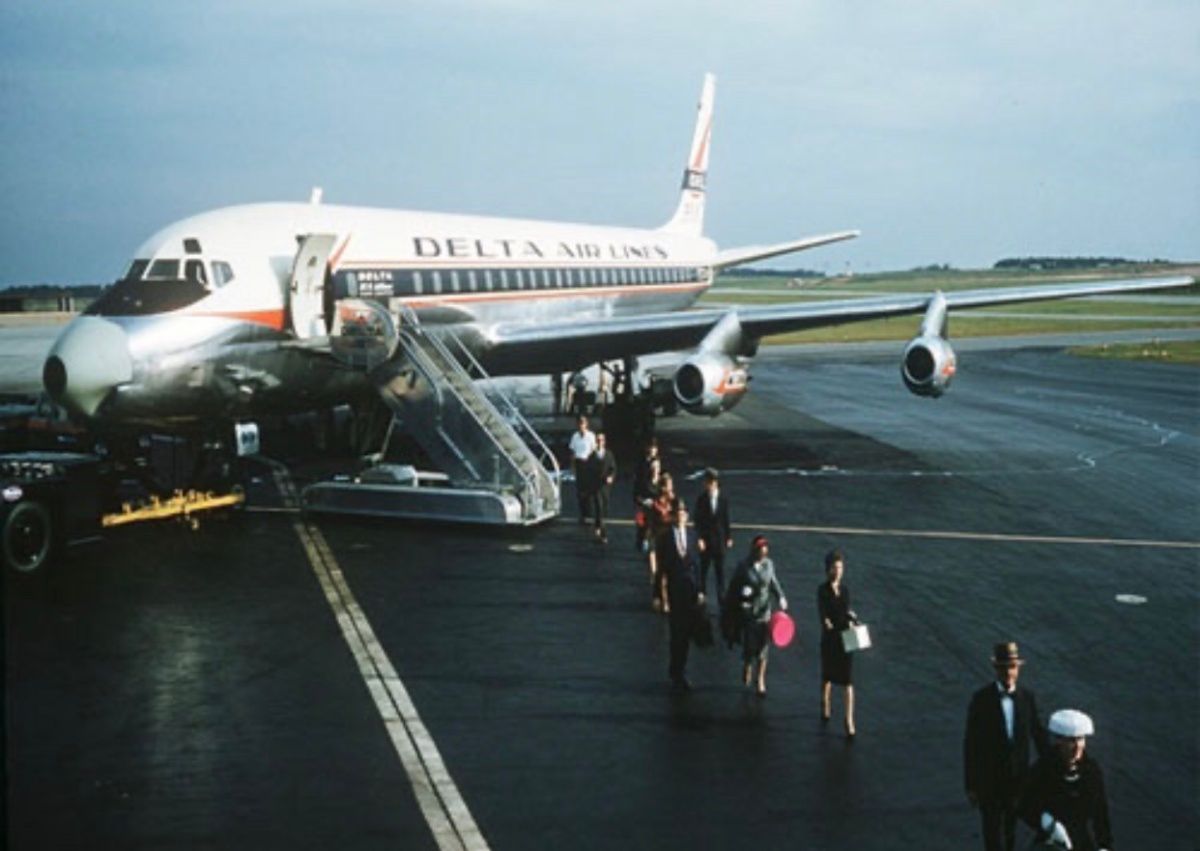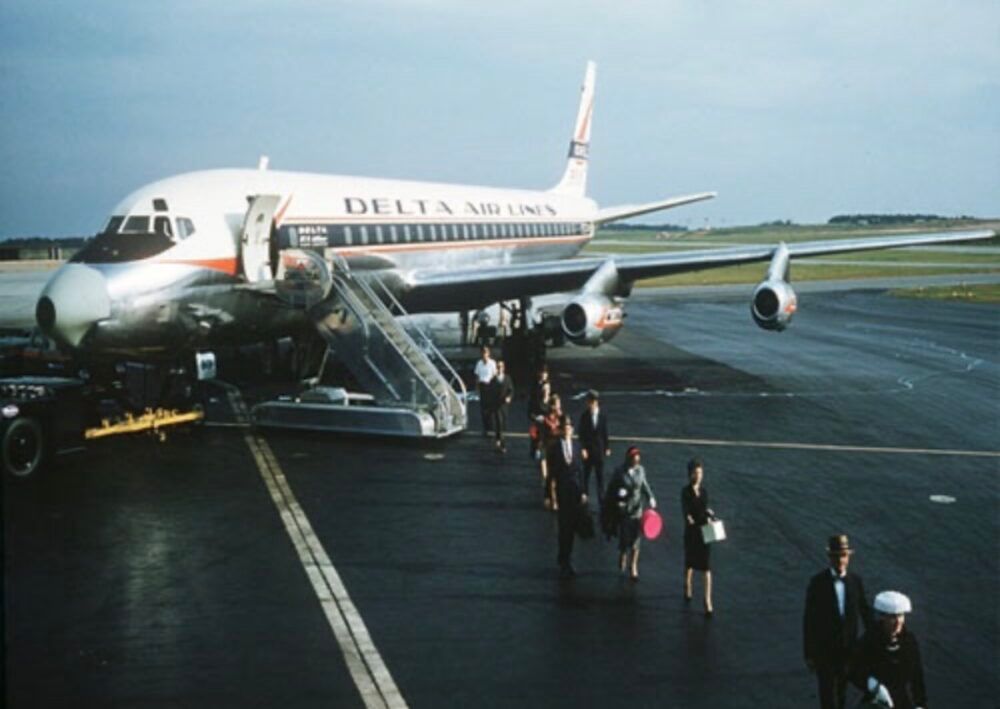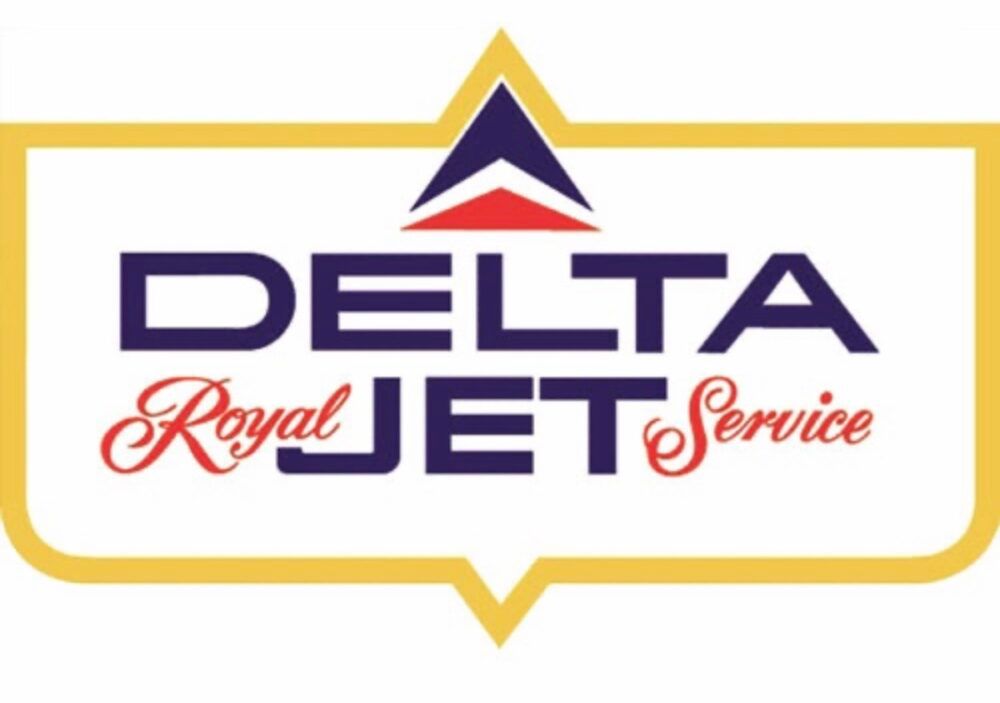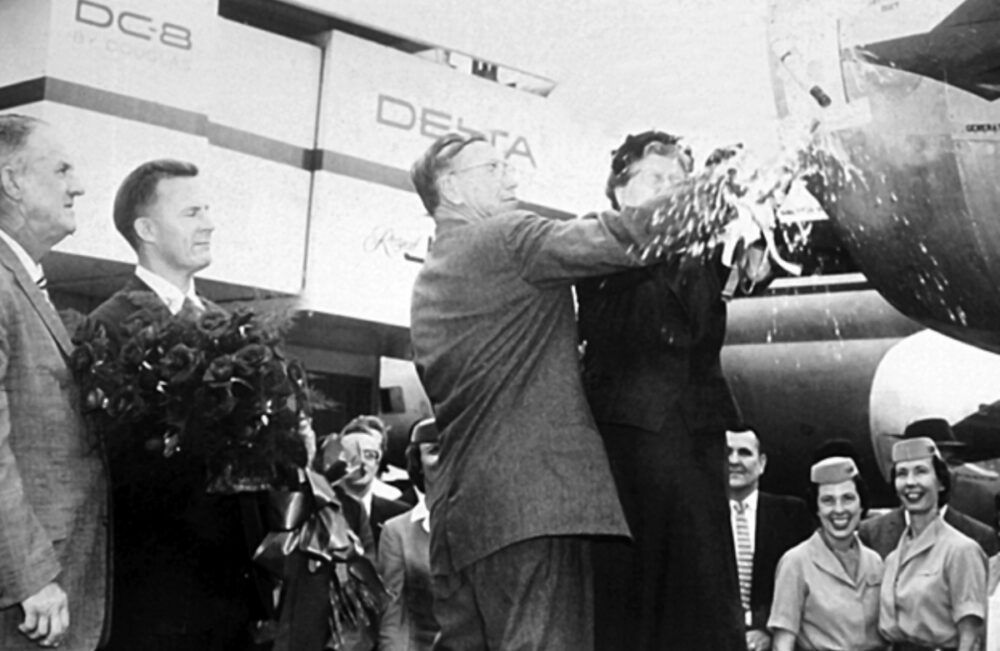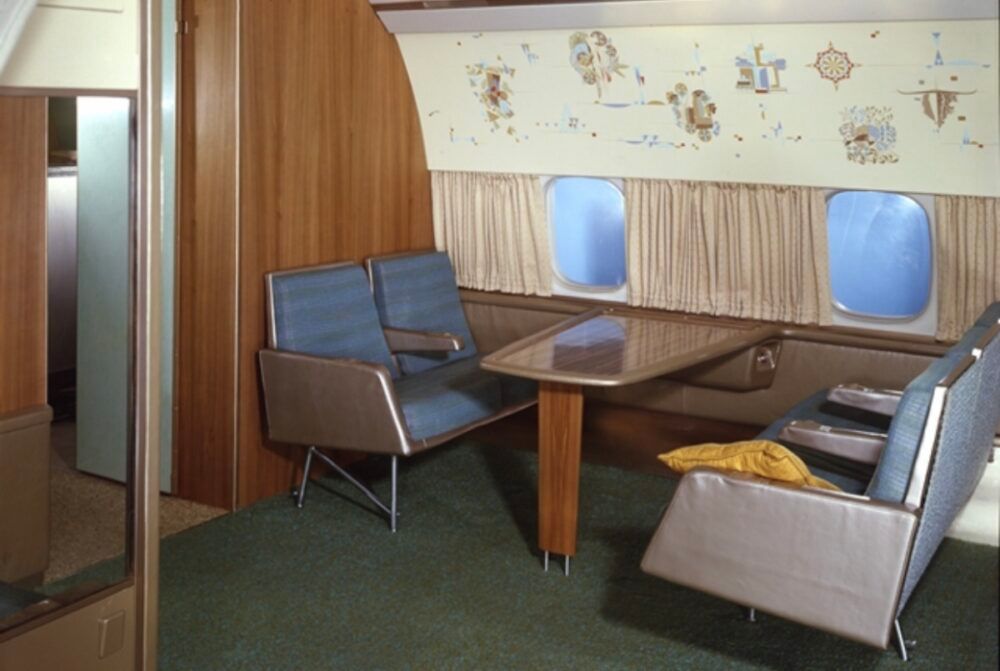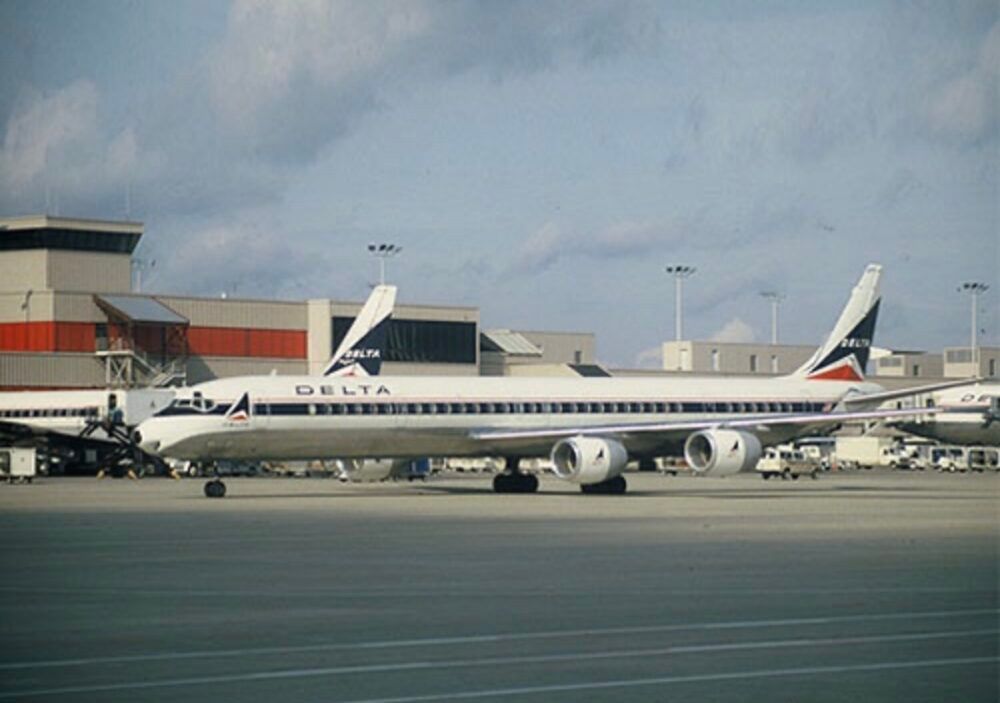By the time the 1950s were coming to a close, Delta was a force to be reckoned with. However, the jet engine was starting to shake up the aviation industry in the United States. With the technology becoming increasingly popular with carriers across the country, Delta had to make some updates to its fleet. Therefore, it chose the Douglas DC-8 as the jet to take it into the new era.
The need for speed
The jet engine was considerably reducing flight times for operators. Delta's rivals were making waves with their new aircraft, and they were gaining an edge on the Atlanta-based airline.
Notably, the arrival of Pan American's Boeing 707-120 on August 15th, 1958, made headlines. It was the first commercial jet airliner to be delivered in the US. Subsequently, on October 26th of that year, the airline launched the first 707 service and the first daily transatlantic jet service from New York to Paris.
Ultimately, Delta was keeping a close eye on its counterparts and was keen not to be left behind. The carrier's founder, C.E Woolman, admitted that the introduction of the jet engine had created a lot of issues for the market. However, he understood that the industry grew up on problems, and it developed because it managed to solve them.
The businessman said he wasn't worried about Delta's ability to maintain its place in the jet age. Subsequently, he called on his team members to meet the challenges that the next decade was going to bring.
The Douglas DC-8 would cut flying times between major cities by up to 40 percent. Additionally, it could carry almost twice the number of passengers and cargo that the larger piston-engine planes of the time could. So, it was the perfect solution to Delta's problems.
Stay informed: Sign up for our daily aviation news digest.
A welcome addition
Accord to the Delta Flight Museum, the carrier managed to secure its deliveries of the aircraft after its rival, Eastern Airlines, decided to wait for a more robust engine. The first Delta's DC-8s was registration N801E, which arrived on July 22nd, 1959.
Nicknamed the "Pride of Delta", it flew 2,497 miles from Douglas' facility in Long Beach, California, to Miami in four hours and 43 minutes. This duration was a record for on the route, with the plane's predecessor, the DC-7 hitting a time of five hours and 50 minutes.
Before the plane arrived at Delta's home of Atlanta, the company invested in the airport's first passenger boarding bridge, which is now called a jet bridge. As part of the project, it also introduced a new logo. The red, white, and blue triangle widget was created to resemble the swept-wing appearance of a jet. This image still forms the basis of the firm's logo today.
The world's first DC-8 passenger flight left New York International Airport (Idlewild) for Atlanta at 09:20, on September 18th, 1959. It soon landed in Georgia at 11:00, carrying 119 passengers.
A proud moment
Woolman was so ecstatic about the occasion that he accidentally cut his hand on a champagne bottle. Despite the injury, he expressed his excitement for the future of conducting services with the plane. He stated that prospects for the US' southern states in the jet age was unlimited.
"This is a proud occasion for Delta Air Lines. We take deep pride in being the first airline in the world to place the magnificent new Douglas DC-8 in scheduled service," he said, according to the Delta Flight Museum.
"We are particularly proud to be able to bring Atlanta, our headquarters and our hometown, and the State of Georgia its first pure jet service."
A new generation
This flight kicked off a regular jet service for Delta, which flew twice a day between the two airports. As an incentive to keep the aircraft full, the company became the first operator to offer complimentary meals on discounted tickets.
Fliers onboard were also treated to a view of the spectacular design of the jet's interior. The decor was inspired by the sky and the sea, while the ceiling depicted the stars and planets.
Meanwhile, first class passengers could enjoy the comfort of the ivy green fabric that was trimmed with beige leather. Additionally, the sunlight-themed window curtains added another touch to the celestial ambiance.
The original models arrived as DC-8-11 aircraft. However, they were eventually upgraded to DC-8-12a, and later to DC-8-51s to keep up to date with the ever-changing demands.
They initially came with four Pratt & Whitney JT3C-6 engines and had a range of 4,409 km. Moreover, they could hit speeds of up to 590 mph. This power enabled a Delta flight to reach Los Angeles from Atlanta in less than three hours, making it the first service to do so.
Keeping up with the market
Delta made a significant update to its DC-8 fleet with the purchase of seven Model -33s from Pan Am at the end of the 1960s. The airline primarily used these on the Delta-Pan Am interchange service to Europe. It also took on the Model -61, which was 37 feet longer than the standard DC-8. These new additions helped the company continue to grow through the 1970s.
There was another upgrade on April 24th, 1982, when Delta introduced the world's first DC-8-71 passenger service. This modernized version of the DC-8-61 featured a low-noise, advanced technology CFM56 engine.
After nearly 30 years of hitting the skies with Delta, the DC-8 was retired on May 1st, 1989. Nonetheless, the jet left a legacy for the airline, giving it a taste of what would become the standard type of engine in modern-day commercial aviation.
What are your thoughts on the Douglas DC-8? Have you ever flown on the plane over the years? Let us know what you think of the aircraft in the comment section.

